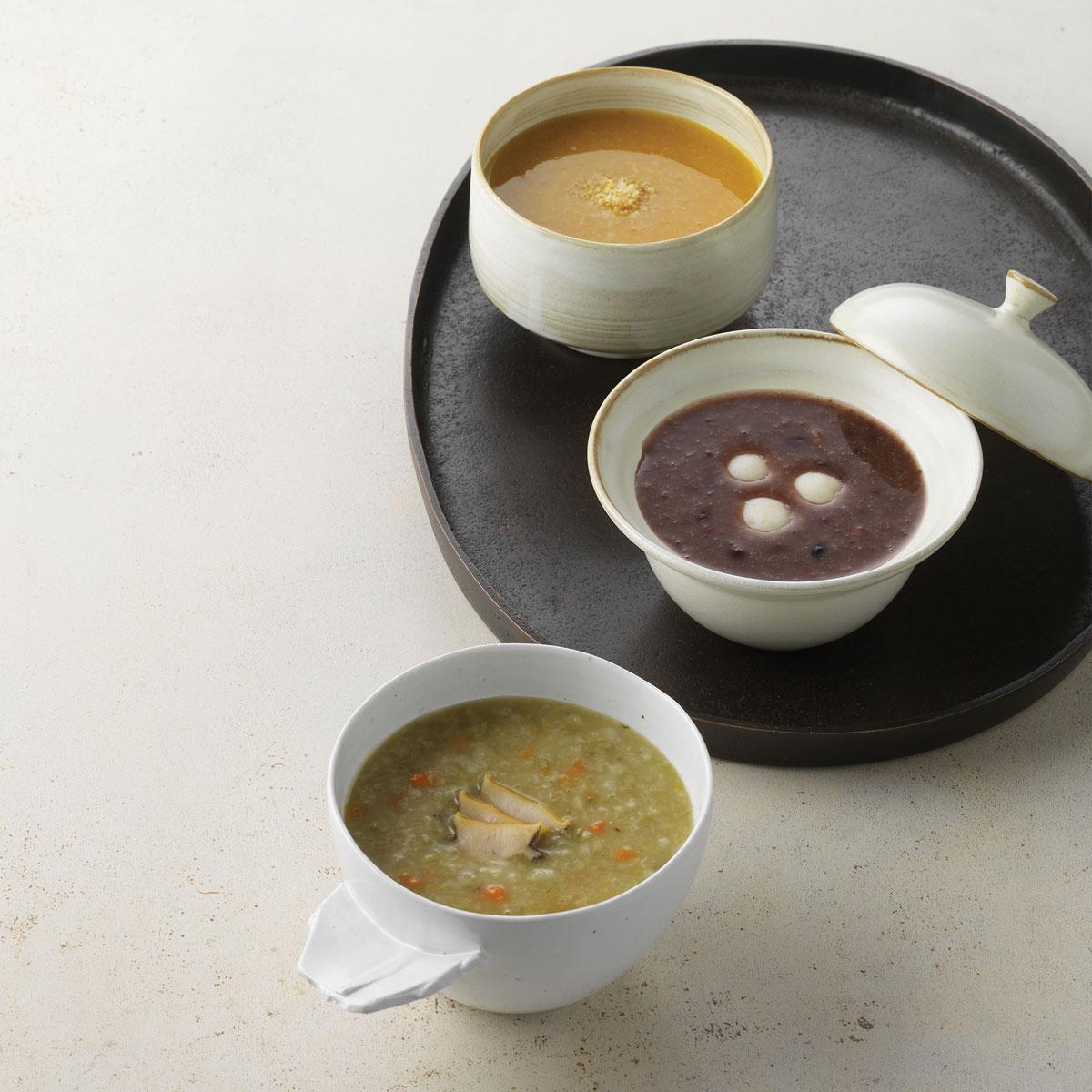Porridge can be said to be a variation of rice. Unlike rice, which needs to be chewed, porridge is made by boiling rice in about five times more water until the grains are very soft and mushy. Porridge is usually the first form of solid food for babies, and it is also ideal for the elderly or patients. Porridge is so easily swallowed and so easy to digest, that the Korean phrase “as easy as eating cold porridge,” refers to a very easy task.
FROM SIMPLE WHITE RICE PORRIDGE TO MORE COLORFUL AND NUTRITIOUS DELUXE PORRIDGE
The basic Korean porridge is the white rice porridge cooked with only rice. But there are also the “deluxe rice porridges,” which are made by adding fresh seasonal vegetables, meats, seafood, nuts, grains and/or other nutritious ingredients to the basic porridge. While hobakjuk (pumpkin porridge) and danpatjuk (sweet red bean porridge) are popular as appetizers or desserts, sogogibeoseotjuk (beef and mushroom porridge), yachaejuk (vegetable porridge), dakjuk (chicken porridge), haemuljuk (seafood porridge) and jeonbokjuk (abalone porridge) are served as main entrees. Porridge is said to have a longer history than rice, and was part of an old Korean tradition. On winter solstice day, the day with the longest night of the year, Koreans ate red bean porridge, because it was believed that the red color of beans kept evil spirits and misfortune away.



![[A ZONE] Gangnam Food Spot](https://m.dgram.co.kr/wp-content/uploads/2020/09/A존-알래스카3-특성이미지_S-218x150.jpg)
![[A ZONE] Gangnam Life Style](https://m.dgram.co.kr/wp-content/uploads/2020/09/로우클래식1-특성이미지_S-218x150.jpg)








![[A ZONE] Gangnam Food Spot](https://m.dgram.co.kr/wp-content/uploads/2020/09/A존-알래스카3-특성이미지_S-324x160.jpg)
![[A ZONE] Gangnam Life Style](https://m.dgram.co.kr/wp-content/uploads/2020/09/로우클래식1-특성이미지_S-324x160.jpg)




